1.
Introduction
In this paper we complete the regularity theory started in [36] for local minimizers of multi-phase functionals, i.e., variational integrals of the type
where the modulating coefficients {aν}κν∈1 and exponents (p,p1,⋯,pκ) satisfy
and the shorthands
will always be used. Exponents p, pν, αν are related by the constraint
which is sharp in the light of the counterexamples in [5,38,40,63]. Precisely, our first achievement concerns some reverse Hölder type inequalities in the spirit of those obtained in [28,30,31] for double phase problems.
Theorem 1. Under assumptions (1.1)–(1.3), let v∈W1,ploc(Ω) be a local minimizer of functional H(⋅) and Bϱ(x0)⊂B2ϱ(x0)⋐ be concentric balls with radius \varrho\in (0, 1] and J\ge 4 be a constant. Then
● in the degenerate regime {deg}_{ \mathit{\text{J}}}(B_{ \varrho}(x_{0})) for all d\ge 1 it holds that
with c\equiv c({data}, \lVert {H(\cdot, Dv)} \rVert_{L^{1+\delta_{g}}(B_{2 \varrho}(x_{0}))}, d) and \Gamma\equiv \Gamma({data}_{0}) ;
● in the nondegenerate regime {ndeg}_{ \mathit{\text{J}}}(B_{ \varrho}(x_{0})) or in the mixed one {mix}_{ \mathit{\text{J}}}(B_{ \varrho}(x_{0})) , for all d\ge 1 , \mu\in (0, 1] it is
for c\equiv c({data}, {A}, \lVert {H(\cdot, Du)} \rVert_{L^{1+\delta_{g}}(B_{2 \varrho}(x_{0}))}, \mu, d) .
We refer to Sections 2.1 and 4 for more details on the terminology adopted in the above statement. A result analogous to the one described in Theorem 1 has been obtained in [4,Theorem 4.1] for generalized [3,19] triple phase problems, which in principle include also our functional \mathcal{H}(\cdot) . However, in [4] to prove estimates similar to (1.4)–(1.5), extra technical assumptions on \{\alpha_{\nu}\}_{\nu = 1}^{ \kappa} are required, i.e.:
cf. [4,(1.17), (1.22) and (6.8)]. Condition (1.6) seems to be unavoidable according to the arguments developed in [4], inspired by [30,31] and essentially relying on a boost of integrability that results from a combination of a Caccioppoli type inequality with the classical fractional Sobolev embedding theorem. In sharp contrast with what happens in [30,31], the rate of nonhomogeneity in multi-phase problems is too high and causes competition among the Hölder continuity exponents \{\alpha_{\nu}\}_{\nu = 1}^{ \kappa} . This drastically affects the integrability improvement granted by Sobolev embedding theorem and possibly leads to violations of the bounds in (1.3). Here, we rather follow the approach of [28], replace fractional Sobolev embedding theorem with a suitable fractional Gagliardo-Nirenberg inequality [17], which matches the controlled gradient fractional differentiability assured by Caccioppoli inequality with the Morrey type result obtained in [36,Theorem 2]. Precisely, the idea consists in exploiting Gagliardo-Nirenberg inequality to translate the \beta_{0} -Hölder continuity of minima for arbitrary \beta_{0}\in (0, 1) consequence of [36,Theorem 2], into gradient higher integrability up to any finite exponent, thus bypassing all structural obstructions due to the coexistence of multiple phases. In the light of [36,Theorem 1], inequalities (1.4)–(1.5) do not add any substantial information on the regularity of minima of functional \mathcal{H}(\cdot) . Anyway, they turn out to be fundamental for instance when such minimizers play the role of comparison map in variational problems governed by the nonhomogeneous functional
where G\colon \Omega\times \mathbb{R}^{n}\to \mathbb{R}^{n} is a Carathéodory vector field so that
and F\colon \Omega \to \mathbb{R}^{n} verifies
For local minima of the functional in (1.7) we have the following Calderón-Zygmund type result.
Theorem 2. Under assumptions (1.1), (1.3), (1.8), (1.9), let u\in W^{1, p}(\Omega) be a local minimizer of functional \mathcal{G}(\cdot) . Then the sharp Calrderón-Zygmund implication
holds for all \gamma > 1 . Moreover, fix open sets \Omega_{0}\Subset \tilde{\Omega}_{0}\Subset \Omega so that {\, {{\rm{dist}}}}(\Omega_{0}, \partial \tilde{{\Omega}}_{0})\approx{\, {{\rm{dist}}}}(\tilde{{\Omega}}_{0}, \partial \Omega)\approx{\, {{\rm{dist}}}}(\Omega_{0}, \partial \Omega) ; for every \gamma > 1 there exists a radius r_{*} > 0 and a constant c\ge 1 , both depending on ({data}_{ \mathit{\text{cz}}}) such that
for all balls B_{ \varrho}(x_{0})\Subset \Omega_{0} with \varrho\in (0, r_{*}) .
We remark that Theorem 2 is not included in [4,Theorem 1.1] as we do not assume (1.6). Let us put our results into the context of the available literature. Multi-phase functionals provide the natural generalization of the double-phase energy
first studied in [63,64], with emphasis about homogenization and on the possible occurrence of Lavrentiev phenomenon and later on, regularity has been obtained in [7,9,28,30], see also [18,29,31] concerning Calderón-Zygmund estimates, [34] on the general vectorial setting and the manifold-constrained case, [24] about potential theoretic considerations and [33] for sharp regularity of nonhomogenous systems with double phase structure and related obstacle problems and [2,3,4,8,19,20,36,39,60,61] for further extensions and more general models. The peculiarity of the double phase energy is the subtle interaction between the p -phase and the (p, q) -phase, whose alternance is controlled by the modulating coefficient a(\cdot) : in proximity of the zero level set \left\{x\in \Omega\colon a(x) = 0\right\} , the integrand in \mathcal{P}(\cdot) behaves as the p -Laplacian, while in correspondence of the positivity set of a(\cdot) it acts as a \Delta_{2} -Young function. This phenomenon is in some sense magnified in the multi-phase framework: in [36] it is observed that each p_{\nu} -phase interacts only with the elliptic p -phase as quantified by (1.3); in particular no additional relation between p_{\nu_{1}} , p_{\nu_{2}} or \alpha_{\nu_{1}} , \alpha_{\nu_{2}} with \nu_{1}\not = \nu_{2}\in \texttt{I}_{ \kappa} should be imposed. On a more formal level, according to the classification done in [33] we see that the integrand in \mathcal{H}(\cdot) is pointwise uniformly elliptic, in the sense that its ellipticity ratio is uniformly bounded:
for any z\in \mathbb{R}^{n} and all balls B\Subset \Omega . However, the possible vanishing of the coefficients creates a deficit in the structure that can be better measured via a nonlocal counterpart of the ellipticity ratio defined as
which may blow up as \lvert {z}\rvert\to \infty . From this analysis it is clear that nonuniform ellipticity of multi-phase integrands is caused by the coefficients, but it is rather soft and still allows a perturbative approach to regularity. The multi-phase energy is a particular instance of Musielak-Orlicz functional, an abstract class of variational integrals described for instance in [45], that permits to treat in a unified fashion the regularity of minima of several model functionals such as double phase, multi-phase, p(x) -Laplacian or double phase with variable exponent and the functional analytic properties of related Lagrangian spaces, see [6,12,25,26,44,46,47,48,50] for an (incomplete) list of references and [57,59] for reasonable surveys. It is worth mentioning that energy \mathcal{H}(\cdot) also falls into the realm of functional with (p, q) -growth, i.e., variational integrals defined by means of a sufficiently smooth integrand F\colon \Omega\times \mathbb{R}^{n}\to \mathbb{R} with a rate of nonuniform ellipticity stronger than (1.11), i.e.:
This class of functionals has first been introduced in the seminal papers [53,54,55,56] and intensively investigated since then, cf. [10,11,14,15,16,21,22,23,27,32,33,35,38,49,62], see also [13,57,59] for an overview of the state of the art. The main idea in this case consists in neglecting the precise structure of the integrand and retaining only the extremals of the growth. In such a way it is possible to prove regularity results for minima of a quite large family of variational integrals at the price of imposing precise closeness conditions between exponents (p, q) and loosing some informations that are distinctive of the specific structure, compare in this perspective [33,Theorem 1] with [33,Theorem 3]. The regularity for general functionals with (p, q) -growth is guaranteed provided that q/p\le 1+\texttt{o}(n) , where \texttt{o}(n)\to_{n\to \infty}0 . This turns out to be a necessary and sufficient condition for regularity, see e.g., [38,55,58] about counterexamples/sharpness of the upper bound on the ratio q/p and [11,49,62] for improvements in the autonomous setting. The constraint linking exponents (p, q) has interpolative nature in the sense that if minimizers a priori feature a higher regularity than the one naturally allowed by the ellipticity of the functional, then the restriction imposed on the size of q/p can be relaxed, in particular it can be made independent on the space dimension, cf. [1,9,13,21,22,27,28,32,34,35,60]. The main tool exploited in most of such papers are Gagliardo-Nirenberg type inequalities [17] that grant a trading between the extra regularity properties of minima and the higher integrability of their gradients. This transaction weakens in some sense the nonuniform ellipticity of the functional, thus either allowing for larger bounds on q/p or drastically reducing the rate of fractional differentiability of the gradient needed for boost its integrability. The latter is the cornerstone of the arguments presented here.
Organization of the paper
This paper is organized as follows. In Section 2 we describe our notation and collect some auxiliary results, Section 3 contains an overview of the regularity theory for local minimizers of multi-phase integrals and Sections 4 and 5 are devoted to the proofs of Theorems 1 and 2 respectively.
2.
Preliminaries
In this section we shall collect some well-known results that will be useful in the proof of Theorems 1 and 2.
2.1. Notation
We denote by \Omega\subset {\mathbb R}^n an open domain and, since our estimates will be local, we shall always assume, without loss of generality, that \Omega is also bounded. We denote by c a general constant larger than one. Different occurrences from line to line will be still denoted by c . Important dependencies on parameters will be as usual emphasized by putting them in parentheses. We shall denote \mathbb{N} as the set of positive integers. As usual, we denote by B_r(x_0): = \{x \in {\mathbb R}^n : |x-x_0| < r\} the open ball with center x_0 and radius r > 0 ; when it is clear from the context, we omit denoting the center, i.e., B_r \equiv B_r(x_0) . When not otherwise stated, different balls in the same context will share the same center. Finally, with B being a given ball with radius r and \delta being a positive number, we denote by \delta B the concentric ball with radius \delta r and by B/\delta \equiv (1/\delta)B . In denoting several function spaces like L^p(\Omega) , W^{1, p}(\Omega) , we shall denote the vector valued version by L^p(\Omega, {\mathbb R}^k), W^{1, p}(\Omega, {\mathbb R}^k) in the case the maps considered take values in {\mathbb R}^k , k\in {\mathbb N} . With \mathcal B \subset {\mathbb R}^{n} being a measurable subset with bounded positive measure 0 < |\mathcal B| < \infty , and with g \colon \mathcal B \to {\mathbb R}^{k} , k\geq 1 , being a measurable map, we shall denote the integral average of g over \mathcal B by
Moreover, if g\colon \Omega\to \mathbb{R}^{k} is any map, U\subset \Omega is an open set and \beta \in (0, 1] is a given number we shall denote
The quantity in the previous definition is a seminorm and g is included in the Hölder space C^{0, \beta}(U, \mathbb{R}^{k}) iff [g]_{0, \beta; U} < \infty . We also point out that g\in C^{1, \beta}(U, \mathbb{R}^{k}) provided that Dg\in C^{0, \beta}(U, \mathbb{R}^{k\times n}) . Furthermore, we shall always avail ourselves of the notation displayed in (1.2). Finally, for the sake of simplicity, we collect the main parameters of the problem in the shorthands
see Sections 3–5 for more informations about the quantities mentioned in the previous display.
2.2. On fractional Sobolev spaces
Given a function w \colon \Omega \to \mathbb{R}^{k} , k\ge 1 and a vector h \in \mathbb{R}^n , we denote by \tau_{h}\colon L^1(\Omega, \mathbb{{\mathbb R}}^{k}) \to L^{1}(\Omega_{|h|}, \mathbb{R}^{k}) the standard finite difference operator pointwise defined as
where \Omega_{|h|}: = \{x \in \Omega \, : \, {\, {{\rm{dist}}}}(x, \partial \Omega) > |h|\} . Let us record the fundamentals of fractional Sobolev spaces, see [37] for more details on this matter.
Definition 1. Let \Omega\subset \mathbb{R}^{n} be an open set with n\ge 2 (the case \Omega\equiv \mathbb{R}^{n} is allowed as well), \alpha\in (0, 1) , p\in [1, \infty) and k\in \mathbb{N} be numbers. The fractional Sobolev space W^{\alpha, p}(\Omega, \mathbb{R}^k) is defined by prescribing that w \colon \Omega \to \mathbb{R}^k belongs to W^{\alpha, p}(\Omega, \mathbb{R}^{k}) iff the following Gagliardo type norm is finite:
Accordingly, if \alpha = [\alpha]+\{\alpha\}\in {\mathbb N} + (0, 1) > 1 , we say that w\in W^{\alpha, p}(\Omega, \mathbb{R}^k) iff the following quantity is finite
The local variant W^{\alpha, p}_{loc}(\Omega, {\mathbb R}^k) is defined by requiring that w \in W^{\alpha, p}(\tilde{\Omega}, \mathbb{R}^k) for every open subset \tilde{\Omega} \Subset \Omega .
A class of spaces that is strictly related to fractional Sobolev spaces is that of Nikol'skii spaces.
Definition 2. Let \Omega\subset \mathbb{R}^{n} be an open set with n\ge 2 and \alpha \in (0, 1) , p\in [1, \infty) , k \in \mathbb{R}^{n} be numbers. The Nikol'skii space N^{\alpha, p}(\Omega, \mathbb{R}^k) is defined by prescribing that w\in N^{\alpha, p}(\Omega, \mathbb{R}^k) iff
The local variant N^{\alpha, p}_{{\operatorname{loc}}}(\Omega, \mathbb{R}^{k}) is defined by requiring that w \in N^{\alpha, p}(\tilde \Omega, \mathbb{R}^{k}) for every open subset \tilde{\Omega} \Subset \Omega .
Whenever \Omega is a sufficiently regular domain, it is W^{\alpha_{0}, p}(\Omega, \mathbb{R}^{k})\nsubseteq N^{\alpha_{0}, p}(\Omega, \mathbb{R}^{k})\nsubseteq W^{\beta, p}(\Omega, \mathbb{R}^{k}) for all \beta\in (0, \alpha_{0}) . This chain of inclusions can be in some sense quantified, and this is the content of the next lemma, cf. [32,Section 2.2].
Lemma 2.1. Let B_{r}\Subset {\mathbb R}^n be a ball with r\leq 1 , w\in L^{p}(B_{r}, \mathbb{R}^{k}) , p > 1 and assume that, for \alpha \in (0, 1] , S\ge 1 and concentric balls B_{ \varrho}\Subset B_{r} , there holds
Then w\in W^{\beta, p}(B_{ \varrho}, \mathbb{R}^{k}) whenever \beta\in (0, \alpha) and
holds, where c\equiv c(n, p) .
We conclude this section with a fractional Gagliardo-Nirenberg type inequality, whose proof can be found in [17,Corollary 3.2], see also [28,Lemma 2.6] for a localized version.
Lemma 2.2. Let B_{ \varrho}\Subset B_{r}\Subset {\mathbb R}^n be concentric balls with r \leq 1 . Let 0 < s_{1} < 1 < s_{2} < 2 , 1 < p, q < \infty , t > 1 and \theta\in (0, 1) be such that
Then every function w\in W^{s_{1}, q}(B_{r})\cap W^{s_{2}, p}(B_{r}) belongs to W^{1, t}(B_{ \varrho}) and the inequality
holds for constants c, \kappa\equiv c, \kappa(n, s_{1}, s_{2}, p, q, t) .
2.3. Tools for nonlinear problems
When dealing with m -Laplacean type problems with m > 1 , we shall often use the auxiliary vector fields V_{m}\colon {\mathbb R}^{n} \to {\mathbb R}^{n} , defined by
whenever z \in {\mathbb R}^{n} . In Sections 4 and 5, we shall adopt the above definition with m\in \{p, p_{1}, \cdots, p_{ \kappa}\} . A useful related inequality is contained in the following
where the equivalence holds up to constants depending only on n, m . Given the specific form of the integrand defining \mathcal{H}(\cdot) , for z_{1}, z_{2}\in \mathbb{R}^{n} being arbitrary vectors and B\subset \mathbb{R}^{n} being a ball, we introduce two quantities that will be often used throughout the paper
An important property which is usually related to such field is recorded in the following lemma.
Lemma 2.3. Let t > -1 , and z_{1}, z_{2}\in \mathbb{R}^{n} be so that \lvert {z_{1}}\rvert+\lvert {z}\rvert_{2} > 0 . Then
with constants implicit in " \sim " depending only on t .
Finally, the "simple, but fundamenta" iteration lemma of [41,Section 1].
Lemma 2.4. Let \mathcal{Z}\colon [\varrho, R)\to [0, \infty) be a function which is bounded on every interval [\varrho, R_*] with R_* < R . Let \varepsilon\in (0, 1) , a_1, a_2, \gamma_{1}, \gamma_{2}\ge 0 be numbers. If
then
holds with c\equiv c(\varepsilon, \gamma_{1}, \gamma_{2}) .
3.
Regularity theory for local minimizers of multi-phase problems
In this section we collect some well-known regularity results for minima of functional \mathcal{H}(\cdot) , i.e., maps verifying the following definition.
Definition 3. With 0\le a(\cdot)\in L^{\infty}(\Omega) and (1.1) _{2} in force, a function v\in W^{1, 1}_{{\operatorname{loc}}}(\Omega) with H(\cdot, Dv)\in L^{1}_{{\operatorname{loc}}}(\Omega) is a local minimizer of functional \mathcal{H}(\cdot) if and only if the minimality relation \mathcal{H}(v, B)\le \mathcal{H}(v+w, B) holds for every ball B\Subset \Omega and all w\in W^{1, 1}_{0}(B) so that H(\cdot, Dw)\in L^{1}(B) .
The details of the proof of all the results listed below can be found in [36] for the case of three phases, i.e., H(x, z)\equiv \left[\lvert {z}\rvert^{p}+a_{1}(x)\lvert {z}\rvert^{p_{1}}+a_{2}(x)\lvert {z}\rvert^{p_{2}}\right] , but, as stressed in [36,Section 1], they can be adapted in a straightforward way to an arbitrary (finite) number of phases, see also [47,Section 2 and Theorems 7.2–7.4]. We start by discussing a peculiar feature of variational integrals with Musielak-Orlicz structure which is the absence of Lavrentiev Phenomenon, see [31,Lemma 1] and [38,Lemma 13].
Lemma 3.1. Under assumptions (1.1)–(1.3), let w\in W^{1, p}_{{\operatorname{loc}}}(\Omega) be any function so that whenever B\Subset \Omega is a bounded, open set it is \lVert {H(\cdot, Dw)} \rVert_{L^{1+\delta'}(B)} < \infty for some \delta' > 0 . Then there exists a sequence of smooth maps \{\tilde{{w}}_{j}\}_{j\in \mathbb{N}}\subset C^{\infty}_{{\operatorname{loc}}}(\Omega) so that it holds
Next, a Sobolev-Poincaré inequality for multi-phase problems, [36,Lemma 2].
Lemma 3.2. Under assumptions (1.1)–(1.3), let B_{ \varrho}\Subset \mathbb{R}^{n} be a ball with radius \varrho\in (0, 1] and w\in W^{1, p}(B_{ \varrho}) be any function so that H(\cdot, Dw)\in L^{1}(B_{ \varrho}) . Then there are a positive constant c\equiv c({data}_{0}, \kappa) and an exponent \mathfrak{{d}}\equiv \mathfrak{{d}}(n, p, p_{1}, \cdots, p_{ \kappa})\in (0, 1) so that
Let us record a local higher integrability result of Gehring type, cf. [36,Lemma 4].
Lemma 3.3. Under assumptions (1.1)–(1.3), let B_{ \varrho}\subset B_{2 \varrho}\Subset \Omega be any ball with radius \varrho\in (0, 1] and v\in W^{1, p}_{{\operatorname{loc}}}(\Omega) be a local minimizer of functional \mathcal{H}(\cdot) so that \lVert {H(\cdot, Dv)} \rVert_{L^{1}(B_{2 \varrho})}\le M for some constant M > 0 . Then there exists a positive higher integrability threshold \delta_{g}\equiv \delta_{g}({data}, M) so that
for all \delta\in (0, \delta_{g}] , with c\equiv c({data}, M) .
The global counterpart of Lemma 3.1 is in the next lemma.
Lemma 3.4. Under assumptions (1.1)–(1.3), let B_{ \varrho}\Subset \Omega be a ball with radius \varrho\in (0, 1] , u_{0}\in W^{1, p(1+\delta_{0})}(B_{ \varrho}) for some \delta_{0} > 0 with \lVert {H(\cdot, Du_{0})} \rVert_{L^{1}(B_{ \varrho})}\le M_{0} be any function and v_{0}\in u_{0}+W^{1, p}_{0}(B_{ \varrho}) be the solution of Dirichlet problem
There exists an higher integrability threshold \sigma_{g}\equiv \sigma_{g}({data}, M_{0}, \delta_{0})\in (0, \delta_{0}) so that
for c\equiv c({data}, M_{0}, \delta_{0}) .
We further recall a straightforward manipulation of [36,Theorem 2].
Theorem 3. Under assumptions (1.1)–(1.3), let B\subset 2B\Subset \Omega be a ball and v\in W^{1, p}_{{\operatorname{loc}}}(\Omega) be a local minimizer of functional \mathcal{H}(\cdot) so that \lVert {H(\cdot, Dv)} \rVert_{L^{1+\delta_{g}}(2B)}\le M_{g} , where \delta_{g} is the higher integrability threshold coming from Lemma 3.3. Then, whenever B_{\sigma_{1}}\subset B_{\sigma_{2}}\Subset B are concentric balls with radii 0 < \sigma_{1}\le \sigma_{2}\le 1 , for every \beta\in (0, n) it holds that
with c\equiv c({data}, M_{g}, \beta) . In particular, v\in C^{0, \gamma_{0}}(B) for all \gamma_{0}\in (0, 1) with
for c\equiv c({data}, M_{g}, \gamma_{0}) .
Finally, we conclude this section with the main result of [36].
Theorem 4. Let v\in W^{1, p}_{{\operatorname{loc}}}(\Omega) be a local minimizer of functional \mathcal{H}(\cdot) , with (1.1)–(1.3) in force. Then v\in C^{1, \beta_{0}}_{{\operatorname{loc}}}(\Omega) for some \beta_{0}\equiv \beta_{0}(\texttt{data}_{0}) .
Remark 3.1. We stress that all the constants appearing in Lemmas 3.3–3.4 and Theorem 3 are nondecreasing in M , M_{0} and M_{g} respectively, cf. [36].
4.
Conditional reverse Hölder inequalities
In this section we prove our main result, i.e., a reverse Hölder inequality for minima of \mathcal{H}(\cdot) in the spirit of those appearing in [28,30,31] without imposing any relation between the Hölder continuity exponents \{\alpha_{\nu}\}_{\nu = 1}^{ \kappa} . A similar result has been obtained in [4,Theorem 4.1] for generalized multi-phase problems with the additional technical constraint (1.6). We believe that our proof can be adapted to more general functionals than \mathcal{H}(\cdot) that still preserve specific Musielak-Orlicz structure. Moreover, since the results in [36] can be transferred essentially verbatim to the vectorial setting, our approach can be successfully applied also to vectorial problems. Following a by now standard terminology see [9,28,29,30,31,33,34] and in particular [36,Section 4], given any ball B_{ \varrho}(x_{0})\Subset \Omega , we identify three scenarios, according to the behavior of coefficients \{a_{\nu}(\cdot)\}_{\nu = 1}^{ \kappa} . Precisely, given any constant J\ge 4 , we shall say that \mathcal{H}(\cdot) is in the degenerate phase \texttt{deg}_{ \text{J}}(B_{ \varrho}(x_{0})) on B_{ \varrho}(x_{0}) if
or \mathcal{H}(\cdot) is in the nondegenerate phase \texttt{ndeg}_{ \text{J}}(B_{ \varrho}(x_{0})) when
while \mathcal{H}(\cdot) is in a mixed phase \texttt{mix}_{ \text{J}}(B_{ \varrho}(x_{0})) provided that the set of indexes \texttt{I}_{ \kappa} is the union of two nonempty subsets \texttt{d}, \texttt{nd}\subset \texttt{I}_{ \kappa} which can be characterized as
The above configurations will play a key role in the next sections.
4.1. Proof of Theorem 1
For the transparency of presentation, we split the proof of Theorem 1 into nine steps. Since the dependencies of the constants declared throughout the proof may seem quite weird, we shall provide a detailed explanation of the behavior of such constants in Step 9.
Step 1: scaling and approximation
Let v\in W^{1, p}_{{\operatorname{loc}}}(\Omega) be a local minimizer of functional \mathcal{H}(\cdot) and B_{ \varrho}(x_{0})\subset B_{2 \varrho}(x_{0})\Subset \Omega be any ball with radius \varrho\in (0, 1] . By Lemma 3.3 we know that H(\cdot, Dv)\in L^{1+\delta_{g}}(B_{ \varrho}(x_{0})) for some \delta_{g}\equiv \delta_{g}(\texttt{data}, \lVert {H(\cdot, Dv)} \rVert_{L^{1}(B_{2 \varrho}(x_{0}))}) , so Lemma 3.1 applies and we obtain a sequence \{\tilde{{v}}_{j}\}_{j\in \mathbb{N}}\subset C^{\infty}(\bar{B}_{ \varrho}(x_{0})) so that (3.1) holds with B\equiv B_{ \varrho}(x_{0}) . We blow up v on B_{ \varrho}(x_{0}) by defining B_{1}(0)\ni x\mapsto v_{ \varrho}(x): = (v(x_{0}+ \varrho x)-(v)_{B_{ \varrho}(x_{0})}) \varrho^{-1} and notice that a simple scaling argument shows that v_{ \varrho}\in W^{1, p}(B_{1}(0)) is a local minimizer of functional
with B_{1}(0)\ni x\mapsto a_{\nu, \varrho}(x): = a_{\nu}(x_{0}+ \varrho x) for all \nu\in \texttt{I}_{ \kappa} and
By definition we have that
We stress that by construction, v_{ \varrho} retains the same higher integrability features of v , i.e., H_{ \varrho}(\cdot, Dv_{ \varrho})\in L^{1+\delta_{g}}(B_{1}(0)) where \delta_{g}\equiv \delta_{g}(\texttt{data}, \lVert {H(\cdot, Dv)} \rVert_{L^{1}(B_{2 \varrho}(x_{0}))}) is the same higher integrability exponent of v . Moreover, setting B_{1}(0)\ni x\mapsto\tilde{{v}}_{j, \varrho}(x): = (\tilde{{v}}_{j}(x_{0}+ \varrho x)-(\tilde{{v}}_{j})_{B_{ \varrho}(x_{0})}) \varrho^{-1} , by (3.1) with B\equiv B_{1}(0) we have a sequence \{v_{j, \varrho}\}_{j\in \mathbb{N}}\subset C^{\infty}(\bar{B}_{1}(0)) so that
For \nu\in \texttt{I}_{ \kappa} and j\in \mathbb{N} , we correct the growth of H_{ \varrho}(\cdot) by introducing the regularized integrands
where we set
By very definition, it is
Keeping in mind (1.1)_{2} , we set \bar{p}: = \max_{\nu\in \texttt{I}_{ \kappa}}p_{\nu} and define the family of auxiliary Dirichlet problems
Direct methods assure that problem (4.4) admits a unique solution v_{j}\in \tilde{{v}}_{j, \varrho}+W^{1, p}_{0}(B_{1}(0)) and, according to the regularity theory in [51] it is
given that \tilde{{v}}_{j, \varrho}\in C^{\infty}(\bar{B}_{1}(0)) and \sigma^{\nu}_{j} > 0 for all \nu\in \texttt{I}_{ \kappa} , so H_{j}(\cdot) has standard \bar{p} -growth. We further notice that functional \mathcal{H}_{j}(\cdot) is of multi-phase type. In fact (1.3) is always in force and (1.1) trivially holds since the coefficients a_{\nu, \varrho}+\sigma^{\nu}_{ \varrho}\in C^{0, \alpha_{\nu}}(\Omega) verify [a_{\nu, \varrho}+\sigma^{\nu}_{ \varrho}]_{0, \alpha_{\nu}; B_{1}(0)} = [a_{\nu, \varrho}]_{0, \alpha_{\nu}; B_{1}(0)} for all \nu\in \texttt{I}_{ \kappa} , therefore Lemma 3.4 applies and there is an exponent \sigma_{g}\equiv \sigma_{g}(\texttt{data}, \lVert {H(\cdot, Dv)} \rVert_{L^{1}(B_{2 \varrho}(x_{0}))})\in (0, \delta_{g}) so that
with c\equiv c(\texttt{data}, \lVert {H(\cdot, Dv)} \rVert_{L^{1}(B_{2 \varrho}(x_{0}))}) .
Step 2: covergence
Let us prove that the sequence \{v_{j}\}_{j\in \mathbb{N}}\subset W^{1, \bar{p}}(B_{1}(0))\cap W^{1, \infty}(B_{1}(0)) of solutions to problem (4.4) converge to v_{ \varrho} , local minimizer on B_{1}(0) of \mathcal{H}_{ \varrho}(\cdot) . By minimality it is
which means that (keep (4.2) _{1} in mind)
The content of the previous display allows using weak lower semicontinuity and the minimality of v_{ \varrho} in (4.7) to get
This implies that \mathcal{H}_{ \varrho}(\tilde{{v}}, B_{1}(0)) = \mathcal{H}_{ \varrho}(v_{ \varrho}, B_{1}(0)) , so using also the strict convexity of z\mapsto H_{ \varrho}(\cdot, z) we obtain
Step 3: fractional Caccioppoli inequality
The minimality of v_{j} in Dirichlet class \tilde{{v}}_{j, \varrho}+W^{1, \bar{p}}_{0}(B_{1}(0)) guarantees the validity of the Euler Lagrange equation
for all \varphi\in W^{1, \bar{p}}_{0}(B_{1}(0)) . We take any vector h\in \mathbb{R}^{n}\setminus \{0\} so that \lvert {h}\rvert\le 2^{-10} , a cut-off function \eta\in C^{2}_{c}(B_{1}(0)) so that
and test (4.10) with \varphi: = \tau_{-h}(\eta^{2}\tau_{h}v_{j}) . Exploiting the integration by parts formula for finite difference operators, we obtain
Let us introduce quantities
and set for m\in \left\{p, p_{1}, \cdots, p_{ \kappa}\right\}
Notice that there is no loss of generality in assuming that \mathcal{D}(h) > 0 , otherwise both terms \mbox{(I)} – \mbox{(II)} identically vanish. Moreover, consider a nonnegative, radially symmetric mollifier \phi\in C^{\infty}(B_{1}(0)) , so that \lVert {\phi} \rVert_{L^{1}(0)} = 1 , let \phi_{\lvert {h}\rvert}: = \lvert {h}\rvert^{-n}\phi(x/\lvert {h}\rvert) and regularize for all \nu\in \texttt{I}_{ \kappa} coefficient a_{\nu, \varrho}(\cdot) as done in [30,Section 5] via convolution against \{\phi_{\lvert {h}\rvert}\}_{\lvert {h}\rvert > 0} thus getting a_{\lvert {h}\rvert}^{\nu}: = a_{\nu, \varrho}*\phi_{\lvert {h}\rvert}\in C^{\infty}(B_{7/8}(0)) . The newly defined coefficients have the following features:
with c\equiv c(n) . This will be helpful in a few lines. Finally, we record that whenever \gamma > 1 and G\in L^{\frac{\gamma}{\gamma-1}}(B_{1}(0), \mathbb{R}^{n}) , F\in W^{1, \gamma}_{0}(B_{5/6}(0), \mathbb{R}^{n}) and \lvert {h}\rvert\le 2^{-10} it is
see [30,(5.29)]. Now we are ready to estimate terms \mbox{(I)} - \mbox{(II)} . Notice that
Via standard monotonicity properties and Lemma 2.3 we bound
with c\equiv c(n, p, p_{1}, \cdots, p_{ \kappa}) , while by Young inequality and standard properties of translation operators we have
for c\equiv c(n, p, p_{1}, \cdots, p_{ \kappa}, \kappa) . Now let us expand term \mbox{(II)} :
Set \mathbb{1}_{p}: = 1 if p\ge 2 and \mathbb{1}_{p} = 0 when p\in (1, 2) and estimate via Lemma 2.3, Young inequality and Hölder inequality with conjugate exponents \left(\frac{p}{2}, \frac{p}{p-2}\right) in the superquadratic case and by (4.12), Hölder inequality with conjugate exponents \left(\frac{p}{2(p-1)}, \frac{p}{2-p}\right) , Jensen inequality and standard properties of translation operators in the subquadratic case:
for c\equiv c(n, p) . Now we abbreviate
and bound by means of (2.2), Lemma 2.3, Young inequality, Hölder inequality with conjugate exponents \left(\frac{2p_{\nu}-p}{2}, \frac{2p_{\nu}-p}{2p_{\nu}-p-2}\right) when p\ge 2 and \left(p, \frac{p}{p-1}\right) , \left(2p_{\nu}-p, \frac{2p_{\nu}-p}{2p_{\nu}-p-1}\right) , \left(\frac{2p_{\nu}-p}{2(p_{\nu}-1)}, \frac{2p_{\nu}-p}{2-p}\right) if p\in (1, 2) and Jensen inequality,
with c\equiv c(n, p, p_{\nu}) . Summing the above inequality for \nu\in \texttt{I}_{ \kappa} we can conclude with
for c\equiv c(n, p, p_{1}, \cdots, p_{ \kappa}, \kappa) . In a similar way, we control
with c\equiv c(n, p, p_{\nu}) . Summing the inequalities in the previous display we obtain
for c\equiv c(n, p, p_{1}, \cdots, p_{ \kappa}, \kappa) . We stress that when dealing with terms \mbox{(II)}^{\nu}_{2} - \mbox{(II)}^{\nu}_{3} we assumed that \lvert {Dv_{j}(x+\lambda h)}\rvert > 0 in the sixth and in the fifth and sixth line of displays (4.13)–(4.14) respectively. There is no loss of generality in this as otherwise the integrals in such lines would vanish identically. Concerning term \mbox{(II)}_{4} , we have
with c\equiv c(n, p, p_{1}, \cdots, p_{ \kappa}, \kappa) . Combining the content of all the previous displays and suitably reducing the size of \varepsilon > 0 we obtain
for c\equiv c(n, p, p_{1}, \cdots, p_{ \kappa}, \kappa) . At this stage we treat separately the superquadratic case p\ge 2 and the subquadratic one p\in (1, 2) .
Step 4: Higher integrability via interpolation - p\ge 2
From (2.2) and (4.15) we obtain
with c\equiv c(n, p, p_{1}, \cdots, p_{ \kappa}, \kappa) , so we apply Lemma 2.1 to deduce that Dv_{j}\in W^{s/p, p}(B_{2/3}(0), \mathbb{R}^{n}) for all s\in (0, 2\delta) , for simplicity choose s = \delta , with
with c\equiv c(\texttt{data}_{0}, \kappa) . Recall that functional \mathcal{H}_{j}(\cdot) is of multi-phase type so Theorem 3 applies and v_{j}\in C^{0, \gamma_{0}}(B_{2/3}(0)) for all \gamma_{0}\in (0, 1) therefore for any 0 < \chi < \gamma_{0} < 1 and q\ge 1 it is
with c\equiv c(n) so we can apply Lemma 2.2 to get
where \chi < \gamma_{0}\in (0, 1) , q > p are arbitrary numbers, c\equiv c(\texttt{data}_{0}, \chi, q, \theta_{1}, t) and it is
which in turn yields that
We stress that \theta_{1}\equiv \theta_{1}(p, \alpha_{1}, \cdots, \alpha_{ \kappa}, \chi) is increasing with respect to \chi and, keeping in mind that q > p , exponent t\equiv t(p, q, \alpha, \alpha_{1}, \cdots, \alpha_{ \kappa}, \chi) is increasing with respect to both, \chi and q . Next, we fix \tau_{1}, \tau_{2}\in [1/2, 2/3] , \tau_{1} < \tau_{2} and, following [28,Section 3.6] we set \sigma: = (\tau_{2}-\tau_{1})/4 and, for a finite \mathcal{J}\subset \mathbb{N} , take a covering of B_{\tau_{1}}(0) with a collection of balls \{B_{\sigma/2}(y_{\iota})\}_{\iota\in \mathcal{J}} made by \lvert {\mathcal{J}}\rvert = c(n)(\tau_{2}-\tau_{1})^{-n} balls so that y_{\iota}\in B_{\tau_{1}}(0) for all \iota\in \mathcal{J} . Notice that such a covering can be chosen in such a way that the finite intersection property is satisfied, in the sense that each doubled ball B_{\sigma}(y_{\iota}) intersects at most 8^{n} of other doubled balls from the same family. We further scale v_{j} on every ball B_{\sigma}(y_{\iota}) by defining v_{\iota}(x): = \sigma^{-1}(v_{j}(y_{\iota}+\sigma x)-(v_{j})_{B_{\sigma}(y_{\iota})}) , a_{\iota}^{\nu}(x): = a_{\nu, \varrho}(y_{\iota}+\sigma x) and H_{\iota}(x, z): = \left[\lvert {z}\rvert^{p}+\sum_{\nu = 1}^{ \kappa}a_{\iota}^{\nu}(x)\lvert {z}\rvert^{p_{\nu}}\right] . Since v_{j} is the solution of (4.4) and therefore it is a local minimizer of functional \mathcal{H}_{j}(\cdot) on B_{1}(0) , it is easy to see that v_{\iota} minimizes functional
and, keeping (4.5) in mind, we see that (4.15) holds for v_{\iota} as well. Recalling that
we can scale back to v_{j} for getting
where it is c\equiv c(\texttt{data}_{0}, \chi, q, \theta_{1}, t) and we also used that
which yields that
Summing (4.21) for \iota \in \mathcal{J} and using the discrete Hölder inequality \left(\frac{q}{\theta_{1}t}, \frac{p}{t(1-\theta_{1})}\right) (legal by means of (4.19)_{2} ), we obtain
for c\equiv c(\texttt{data}_{0}, \chi, q, \theta_{1}, t) . Here, we also used that B_{\sigma}(y_{\iota})\subset B_{\tau_{2}}(0)\subset B_{2/3}(0) and that \mathbb{R}^{n}\ni \omega\mapsto [v_{ \varrho}]_{\chi, q; \omega}^{q} is superadditive as a set function. All in all, using also (4.17) and (3.4) we get
with c\equiv c(\texttt{data}, \lVert {H(\cdot, Dv)} \rVert_{L^{1+\delta_{g}}(B_{2 \varrho}(x_{0}))}, \delta_{0}, \gamma_{0}, \chi, q, \theta_{1}, t) . Now fix any d > \max_{\nu\in \texttt{I}_{ \kappa}}2p_{\nu}-p . A straightforward computation yields the chain of implications:
which in turn implies that we can choose a suitable lower bound on q so that
This means that in (4.22) we can use the interpolation inequalities:
where it is
for all \nu\in \texttt{I}_{ \kappa} , to have
where
At this stage, we can fix q = 4d , notice that
for all \nu\in \texttt{I}_{ \kappa} . Furthermore, fixing any \mu\in (0, 1] and in accordance increasing further the value of \chi , it is
From (4.25) we see that we can apply Young inequality with conjugate exponents \left(\frac{p}{Y_{\nu}}, \frac{p}{p-Y_{\nu}}\right) to get
for c\equiv c(\texttt{data}, \lVert {H(\cdot, Dv)} \rVert_{L^{1+\delta_{g}}(B_{2 \varrho}(x_{0}))}, \mu, d) . Such a dependency can be justified by the fact that all the parameters coming from Lemma 2.2 ultimately depend only on (\texttt{data}_{0}, \mu, d) . The content of the previous display legalizes an application of Lemma 2.4, so we obtain
with c\equiv c(\texttt{data}, \lVert {H(\cdot, Dv)} \rVert_{L^{1+\delta_{g}}(B_{2 \varrho}(x_{0}))}, \mu, d) .
Step 5: Higher integrability via interpolation - 1 < p < 2
We jump back to (4.15) and apply Hölder and Young inequalities with conjugate exponents \left(\frac{2}{p}, \frac{2}{2-p}\right) to get
with c\equiv c(n, p, p_{1}, \cdots, p_{ \kappa}, \kappa) , which by Lemma 2.1 yields that Dv_{j}\in W^{s, p}(B_{2/3}(0), \mathbb{R}^{n}) for all s\in (0, \delta) . At this stage, upon choosing s = \delta/p , the procedure remains identical to the one described for the superquadratic case, so (4.27) holds also when p\in (1, 2) .
Step 6: Conclusions
Notice that A_{\nu, j}\to A_{\nu} as j\to \infty , where
Moreover, we can use (4.8), (4.9) and weak lower semicontinuity for passing to the limit in (4.27) and obtain
Scaling back to v , using Hölder inequality on the left-hand side to control the L^{d} -average of v (keep in mind that t > d ) and setting
we obtain
with c\equiv c(\texttt{data}, \lVert {H(\cdot, Dv)} \rVert_{L^{1+\delta_{g}}(B_{2 \varrho}(x_{0}))}, \mu, d) . Now notice that the choice of parameters made in Step 4 and definitions (4.24)–(4.29) yield that
therefore with these expansions (4.30) becomes
with c\equiv c(\texttt{data}, \lVert {H(\cdot, Dv)} \rVert_{L^{1+\delta_{g}}(B_{2 \varrho}(x_{0}))}, \mu, d) .
Step 7: Degenerate phase
If \texttt{deg}_{ \text{J}}(B_{ \varrho}(x_{0})) is in force, we first set \mu = 1/2 to remove it from the dependencies of the constants as it will not have a role in this scenario. Furthermore, (1.1) and a quick computation show that
so (4.32) and the definition in (4.28) yield that
which means that we can rearrange (4.31) as
where \Gamma: = \max_{\nu\in \texttt{I}_{ \kappa}}\Gamma_{\nu} and c\equiv c(\texttt{data}, \lVert {H(\cdot, Dv)} \rVert_{L^{1+\delta_{g}}(B_{2 \varrho}(x_{0}))}, d) .
Step 8: Nondegenerate/mixed phase
Assume that either \texttt{ndeg}_{ \text{J}}(B_{ \varrho}(x_{0})) or \texttt{mix}_{ \text{J}}(B_{ \varrho}(x_{0})) is in force. Keeping (4.32) in mind, this means that either (4.33) never holds or that it is verified only for all those indices belonging to \texttt{d} . So it is convenient to replace (4.33) with
so we can conclude via (4.26) that
with c\equiv c(\texttt{data}, \lVert {a_{\nu}} \rVert_{L^{\infty}(B_{2 \varrho}(x_{0}))}, \lVert {H(\cdot, Dv)} \rVert_{L^{1+\delta_{g}}(B_{2 \varrho}(x_{0}))}, \mu, d) .
Step 9: Dependency of constants and their stability under blow up
In Step 1 we stressed that the functional \mathcal{H}_{j}(\cdot) preserves the multi-phase structure, therefore all the results listed in Section 3 apply. In particular, given that we are working on approximating, rescaled problems, we are interested in studying the stability of the constants appearing in Theorem 3 when it is applied to the sequence \{v_{j}\}_{j\in \mathbb{N}} solutions to (4.4) with respect to scaling and passage to the limit as j\to\infty . As already pointed out in Step 1, we notice that by Lemma 3.3, the original local minimizer v of functional \mathcal{H}(\cdot) is locally more integrable, in the sense that whenever B_{ \varrho}(x_{0})\subset B_{2 \varrho}(x_{0})\Subset \Omega is any ball with radius \varrho\in (0, 1] , v\in W^{1, p(1+\delta_{g})}(B_{ \varrho}(x_{0})) for some \delta_{g}\equiv \delta_{g}(\texttt{data}, \lVert {H(\cdot, Dv)} \rVert_{L^{1}(B_{2 \varrho}(x_{0}))}) . Such information is directly transferred on the blown up map v_{ \varrho} defined at the very beginning of Step 1, which now satisfies H_{ \varrho}(\cdot, Dv_{ \varrho})\in W^{1, 1+\delta_{g}}(B_{1}(0)) , where \delta_{g}\equiv \delta_{g}(\texttt{data}, \lVert {H(\cdot, Dv)} \rVert_{L^{1}(B_{2 \varrho}(x_{0}))}) is of course the same higher integrability threshold of v . By (4.2) _{3} and (4.3) it is
for j\in \mathbb{N} sufficiently large and, clearly, up to relabel there is no loss of generality in assuming that (4.34) holds for all integers j\ge1 . Looking at v_{j} , solution to (4.4), we see that a global higher integrability result applies by means of Lemma 3.4 with \delta_{0}\equiv \delta_{g} , cf. (4.6) and, by Remark 3.1 the dependency of c from M_{0} is nondecreasing and always appears in the form
where we have also exploited that
Precisely, by (4.34) _{1} it is M_{0}: = \lVert {H_{ \varrho}(\cdot, Dv_{ \varrho})} \rVert_{L^{1}(B_{1}(0))}+1 , so scaling (4.35) back on B_{ \varrho}(x_{0}) , we can conclude that
Recalling that c is nondecreasing in M_{0} , we deduce that
The same procedure applies for the constant appearing in the local higher integrability result of Lemma 3.3 with M = M_{0} as by minimality it is
and the dependencies of the constants from Gehring Lemmas have been fixed. We further stress that, looking at the proof of Gehring Lemmas, [36,Lemmas 4 and 5], [43,Chapter 6] and [42,Theorem 3 and Proposition 1,Chapter 2], we can exploit (4.38) to make sure that the higher integrability thresholds \delta_{g} and \sigma_{g} depend ultimately on (\texttt{data}, \lVert {H(\cdot, Dv)} \rVert_{L^{1}(B_{2 \varrho}(x_{0}))}) . From Remark 3.1, we see also that the all the constants appearing in Theorem 3 are nondecreasing with respect to M_{g} , with the (obvious) choice M_{g} = \lVert {H_{ \varrho}(\cdot, Dv_{ \varrho})} \rVert_{L^{1+\delta_{g}}(B_{1}(0))}+1 . In fact, Lemma 3.4 renders
for c\equiv c(\texttt{data}, \lVert {H(\cdot, Dv)} \rVert_{L^{1}(B_{2 \varrho}(x_{0}))}) , cf. (4.38). Again, keeping (4.36) in mind, from [36] we have that this dependency is of the form [a_{\nu, \varrho}]_{0, \alpha_{\nu}; B_{1}(0)}M_{g}^{\frac{p_{\nu}-p}{p}} for all \nu\in \texttt{I}_{ \kappa} , so scaling back we get
so we can conclude that c(\texttt{data}, M_{g})\le c(\texttt{data}, \lVert {H(\cdot, Dv)} \rVert_{L^{1+\delta_{g}}(B_{2 \varrho}(x_{0}))}) . Moreover, looking carefully to the arguments developed in [36], in addition to those described above, another kind of dependency appears that seems to be dangerous for our blow up procedure. In fact, suitably adapting [36,Corollary 3] to our framework, we have constants that are nondecreasing functions of
where \sigma_{g}\equiv \sigma_{g}(\texttt{data}, \lVert {H(\cdot, Dv)} \rVert_{L^{1}(B_{2 \varrho}(x_{0}))}) is the higher integrability threshold given by Lemma 3.4, \lambda_{g}: = 1-\frac{n}{p(1+\sigma_{g})} is the Hölder continuity exponent given by Morrey's embedding theorem and we also used (4.36). Now, if p(1+\sigma_{g})\le n , we recall from the proof of [36,Lemma 6] that
where c\equiv c(\texttt{data}, \lVert {H(\cdot, Dv)} \rVert_{L^{1}(B_{2 \varrho}(x_{0}))}) behaves as described in (4.35) so no issues about it arise, see also [30,proof of Theorem 1.1]. Here, we also exploited the minimality of v_{j} , that by construction it is (\tilde{{v}}_{j, \varrho})_{B_{1}(0)} = 0 and Poincaré inequality (3.2). This means that scaling back to B_{ \varrho}(x_{0}) in (4.39)_{1} we have
for c\equiv c(\texttt{data}, \lVert {H(\cdot, Dv)} \rVert_{L^{1}(B_{2 \varrho}(x_{0}))}) (which, as already mentioned, has been treated in (4.38)). On the other hand if p(1+\sigma_{g}) > n , via Morrey embedding theorem, Lemma 3.4 and Poincaré inequality we have
for c\equiv c(\texttt{data}, \lVert {H(\cdot, Dv)} \rVert_{L^{1}(B_{2 \varrho}(x_{0}))}) and we also used that (\tilde{{v}}_{j, \varrho})_{B_{1}(0)} = 0 . With this last inequality at hand, we can jump back to (4.39)_{2} and conclude as in (4.40).
Remark 4.1. We stress that the constants appearing in (1.4)–(1.5) are nondecreasing with respect to \lVert {H(\cdot, Dv)} \rVert_{L^{1+\delta_{g}}(B_{2 \varrho}(x_{0}))} and to J .
5.
Applications to Calderón Zygmund estimates
In this section we provide Calderón-Zygmund type estimates for local minimizers of the nonhomogeneous functional \mathcal{G}(\cdot) , according to the following definition.
Definition 4. Let H(\cdot, F)\in L^{1}_{{\operatorname{loc}}}(\Omega) , 0\le a(\cdot)\in L^{\infty}(\Omega) and (1.1) _{2} , (1.8) be in force. A function u\in W^{1, 1}_{{\operatorname{loc}}}(\Omega) with H(\cdot, Du)\in L^{1}_{{\operatorname{loc}}}(\Omega) is a local minimizer of \mathcal{G}(\cdot) if and only if the minimality relation \mathcal{G}(u, B)\le \mathcal{G}(u+w, B) holds for every ball B\Subset \Omega and all w\in W^{1, 1}_{0}(B) with H(\cdot, Dw)\in L^{1}(B) .
5.1. Proof of Theorem 2
The outline of the proof of Theorem 2 is analogous to the one of [4,29,31], therefore we shall follow the same steps indicated there and point out only the relevant changes.
Step 1 - Existence and uniform higher integrability
Existence and uniqueness for minima of functional \mathcal{G}(\cdot) follows by direct methods under the minimal assumptions 0\le a_{\nu}(\cdot)\in L^{\infty}(\Omega) for all \nu\in \texttt{I}_{ \kappa} and H(\cdot, F)\in L^{1}(\Omega) , that are in any case guaranteed by (1.1), (1.8) and (1.9), cf. [29,Remark 1.2] and Definition 4. Moreover, a straightforward manipulation of [31,Theorem 4] assures that there is a positive higher integrability threshold \delta_{\gamma}\equiv \delta_{\gamma}(\texttt{data}, \Lambda, \lVert {H(\cdot, Du)} \rVert_{L^{1}(\tilde{{\Omega}}_{0})}) < \gamma-1 so that
and whenever B_{ \varrho}(x_{0})\Subset \Omega is a ball with radius \varrho\in (0, 1] it is
for all \delta\in (0, \delta_{\gamma}] with c\equiv c(\texttt{data}, \Lambda, \lVert {H(\cdot, Du)} \rVert_{L^{1}(B_{ \varrho}(x_{0}))}, \gamma) .
Step 2 - Exit time and covering of level sets
Let \Omega_{0}\Subset \tilde{{\Omega}}_{0}\Subset \Omega be three open set as in the statement of Theorem 2 and B_{r}\Subset \Omega_{0} be a ball with radius r\le r_{*} , a threshold that will be fixed in a few lines. We recall that (5.1)–(5.2) and a standard covering argument render
We apply the exit time and covering argument as in [29,Theorem 1.1], which in particular yields the collection of balls \{B_{\iota}\}\equiv \{B_{ \varrho_{\iota}}(x_{\iota})\}\equiv \{5\tilde{{B}}_{\iota}\} as denoted in [29,(4.9)–(4.11)]. All such balls are contained in B_{r}\Subset \Omega_{0} .
Step 3 - Comparison, first time
We construct a first comparison problem. Precisely, we let v_{\iota}\in u+W^{1, p}_{0}(4B_{\iota}) be the solution of Dirichlet problem
whose existence and uniqueness is guaranteed by standard direct methods. By minimality, v_{\iota} satisfied the integral identity
for all \varphi\in W^{1, p}_{0}(4B_{\iota}) so that H(\cdot, D\varphi)\in L^{1}(4B_{\iota}) . Moreover, by the minimality of v_{\iota} in Dirichlet class u+W^{1, p}_{0}(4B_{\iota}) , (5.3), Lemma 3.4 and Remark 3.1 we have
for c, \sigma_{g}\equiv c, \sigma_{g}(\texttt{data}_{ \text{cz}}) and \sigma_{g}\in (0, \delta_{\gamma}) . To get this dependency, motivated by (5.3) and (5.6)_{1} , we choose in Lemma 3.4 M_{0} = \lVert {H(\cdot, Du)} \rVert_{L^{1}(\tilde{{\Omega}}_{0})} . Moreover, by Theorem 4 we have that v_{\iota}\in C^{1, \beta_{0}}_{{\operatorname{loc}}}(4B_{\iota}) for some \beta_{0}\equiv \beta_{0}(\texttt{data}_{0}) and, according to Theorem 1, reverse Hölder inequalities (1.4)–(1.5) hold for all d\in [1, \infty) and any \mu\in (0, 1] within 4B_{\iota} . Extending u-v_{\iota}\equiv 0 in \Omega\setminus 4B_{\iota} and recalling the definitions given in Section 2.3, we see that we can proceed as in [29,(4.17)] to get
for c\equiv c(n, \Lambda, p, p_{1}, \cdots, p_{ \kappa}, \kappa) and c\equiv c(n, \Lambda, p, p_{1}, \cdots, p_{ \kappa}, \kappa, \varepsilon) .
Step 4 - Comparison, second time
We define
and notice that Theorem 4 yields that v_{\iota}\in W^{1, \infty}(2B_{\iota}) , therefore setting
it trivially holds that H_{+}(Dv_{\iota})\in L^{1}(2B_{\iota}) . This means that we can consider the solution w_{\iota}\in v_{\iota}+W^{1, p}(2B_{\iota}) of the second Dirichlet problem
By minimality, w_{\iota} satisfies
and in particular (5.10)_{1} holds for all \varphi\in W^{1, p}_{0}(2B_{\iota}) so that H_{+}(D\varphi)\in L^{1}(2B_{\iota}) . After extending v_{\iota}-w_{\iota}\equiv 0 in \Omega_{0}\setminus 2B_{\iota} , we see that the function v_{\iota}-w_{\iota} is admissible in both (5.5)–(5.10) _{1} so standard monotonicity arguments yield
for c\equiv c(n, p, p_{1}, \cdots, p_{ \kappa}, \kappa) . Here we employed again the definitions given in Section 2.3. In the following we shall introduce three new positive constants, which may vary from line to line, but will always have the same dependencies:
● c_{\texttt{nd}}\equiv c_{\texttt{nd}}(n, \Lambda, p, p_{1}, \cdots, p_{ \kappa}, \kappa) ;
● c_{\texttt{m}}\equiv c_{\texttt{m}}(\texttt{data}_{ \text{cz}}) ;
● c_{\texttt{d}}\equiv c_{\texttt{d}}(\texttt{data}, \Lambda, \lVert {H(\cdot, Du)} \rVert_{L^{1}(\tilde{{\Omega}}_{0})}, \lVert {H(\cdot, F)} \rVert_{L^{\gamma}(\tilde{{\Omega}}_{0})}, \gamma, {\, {{\rm{dist}}}}(\tilde{{\Omega}}_{0}, \partial \Omega)) .
Step 5 - Estimates in the nondegenerate phase
Assume that \texttt{ndeg}_{ \text{J}}(2B_{\iota}) is in force for some J\ge 4 that will eventually be fixed as a function of (n, \Lambda, p, p_{1}, \cdots, p_{ \kappa}, \kappa) . In this setting, it is
Notice that the very definition of H_{+}(\cdot) and the minimality of w_{\iota} in class v_{\iota}+W^{1, p}_{0}(2B_{\iota}) and of v_{\iota} in class u+W^{1, p}_{0}(4B_{\iota}) yield that
for c\equiv c(n, \kappa) , so we may estimate via Hölder inequality with conjugate exponents \left(p_{\nu}, \frac{p_{\nu}}{p_{\nu}-1}\right) ,
for c\equiv c(n, p, p_{\nu}, \kappa) . Summing the content of the above display over \nu \in \texttt{I}_{ \kappa} we obtain
Step 8 - Estimates in the mixed phase
Now we assume that \texttt{mix}_{ \text{J}}(2B_{\iota}) holds with J\ge 4 still to be fixed, pick any
where \delta_{\gamma} is the higher integrability exponent determined in Step 1 and set
Keeping in mind that
we can proceed as in [4,Section 6] and apply (1.5) with d = p_{\nu} and \mu as in (5.15) to control
We stress that here we also used Remark 4.1 and (5.1)–(5.3) to determine such dependencies for the various constants appearing above. Summing the above inequalities over \nu\in \texttt{I}_{ \kappa} we get
Step 9 - Estimates in the degenerate phase
Finally, we look at the case \texttt{deg}(2B_{\iota}) . We set
and as done in Step 8 we estimate
Summing the content of the previous display over \nu\in \texttt{I}_{ \kappa} we obtain
Step 10 - Matching phases and comparison estimates
Combining (5.11), (5.14), (5.17) and (5.18) we obtain
with c\equiv c(n, \Lambda, p, p_{1}, \cdots, p_{ \kappa}, \kappa) , so via triangular inequality we get
for c\equiv c(n, \Lambda, p, p_{1}, \cdots, p_{ \kappa}, \kappa) . Here we also used that \varrho_{\iota}\le r , cf. Step 2. Next, we set
with c\equiv c(n, \Lambda, p, p_{1}, \cdots, p_{ \kappa}, \kappa) and use the informations contained in [29,(4.14) _{2} ] (which come from a covering and exit time argument, so they do not depend on the particular form of H(\cdot) therefore apply in our case as well) to establish that
which holds for any J\ge 4 and for all balls B_{\iota} from the covering in Step 2. We stress that (5.21) holds true independently from the degenerate/nondegenerate/mixed status of H(\cdot) . Next, we show that
with c\equiv c(\texttt{data}_{ \text{cz}}) . Assume first that \texttt{ndeg}_{ \text{J}}(2B_{\iota}) holds with J = 10 . Then we have
with c\equiv c(\texttt{data}) . On the other hand, if \texttt{deg}_{ \text{J}}(2B_{\iota}) or \texttt{mix}_{ \text{J}}(2B_{\iota}) hold again with J = 10 , we have
for c\equiv c(\texttt{data}_{ \text{cz}}) and (5.22) is completely proven.
Step 11 - A priori estimates for Dw_{\iota}
Notice that the frozen integrands H_{+}(\cdot) falls into the realm of those treated in [52]; in particular it is
with c, c_{*}\equiv c, c_{*}(\texttt{data}_{ \text{cz}}) , where we used the definition in (5.8). At this stage, we can proceed exactly as in [29,Steps 10 and 11] to first determine J\equiv J(\texttt{data}_{ \text{cz}})\ge 4 , then \varepsilon\equiv \varepsilon(\texttt{data}_{ \text{cz}})\in (0, 1) , M\equiv M(\texttt{data}_{ \text{cz}}) and finally the threshold radius r_{*}\equiv r_{*}(\texttt{data}_{ \text{cz}})\in (0, 1] to obtain (1.9) and the proof is complete.
Acknowledgements
This work is supported by the University of Turin via the project "Regolaritá e proprietá qualitative delle soluzioni di equazioni alle derivate parzial".
Conflict of interest
The author declares no conflict of interest.











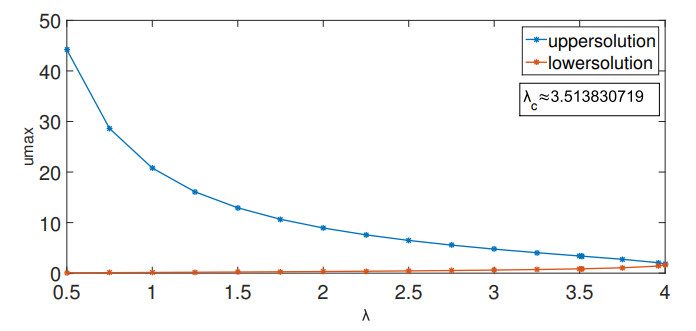
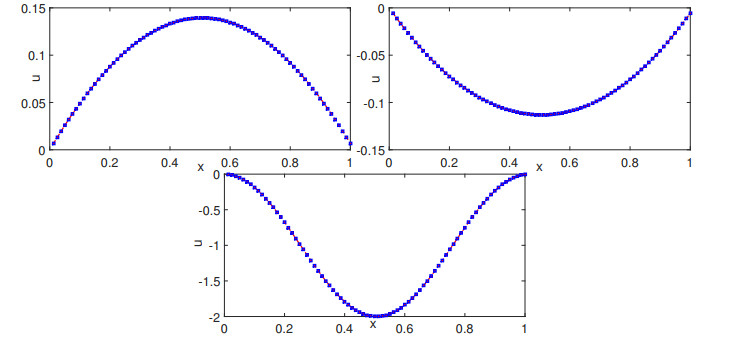
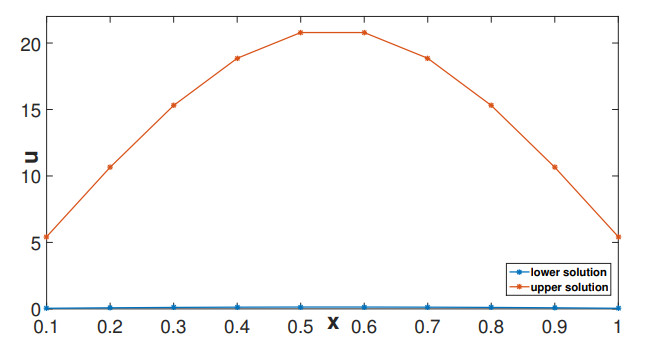
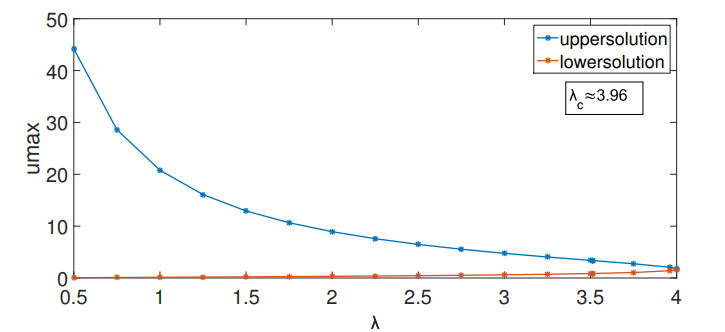
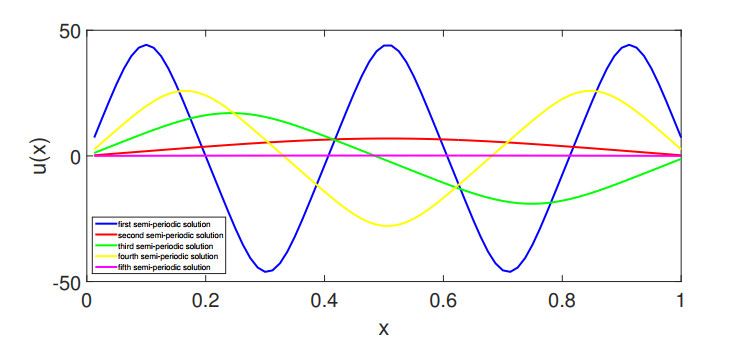
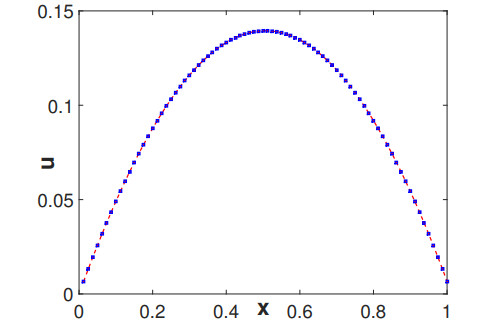
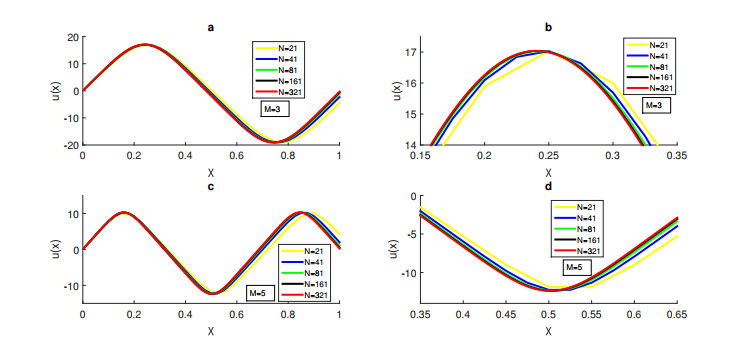
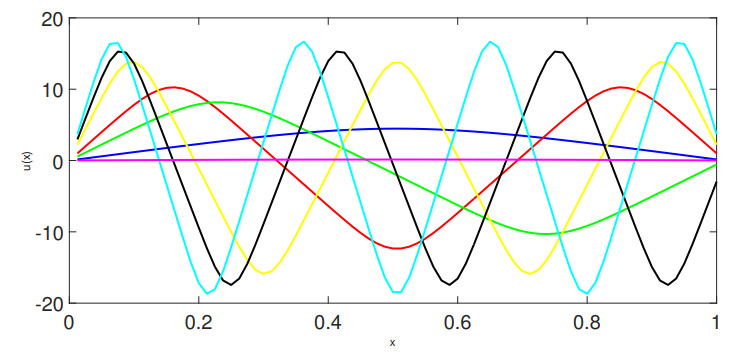
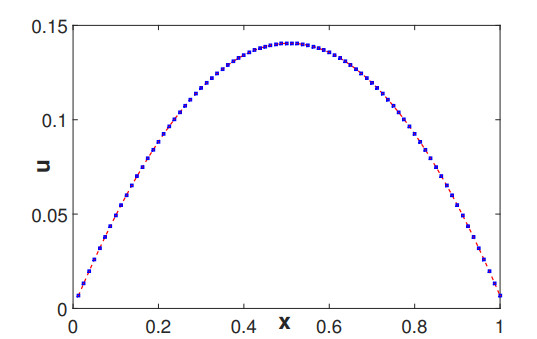


 DownLoad:
DownLoad: